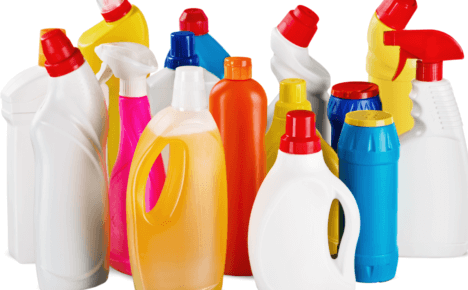
Perfluoroalkyl and Polyfluoroalkyl substances are a family of substances more commonly known as PFAS. These chemicals include thousands of different substances that are intentionally designed to be long-lasting and to make products more durable. Colloquially, PFAS are referred to as the “forever chemicals.” PFAS chemicals are used in products such as:
- Stain- and water-resistant fabrics and carpeting
- Cleaning products
- Paints
- Fire-fighting foams
The problem with PFAS chemicals alleged by Plaintiffs in litigation is that they are nearly impossible to remove once they are in the ground or the human body. Plaintiffs allege that PFAS have an extremely long half-life, and leave the human body slowly and that, over time, the levels of these chemicals can build up in the body. The International Agency for Research on Cancer classifies PFAS as a “possible carcinogen.” Furthermore, although it is possible to clean up PFAS, the costs are prohibitively expensive.
There May Be a Coming Wave of PFAS Lawsuits
Over the last two years, the number of lawsuits related to PFAS has begun to increase. Although many of these cases relate to one particular application of PFAS, legal observers anticipate the number of PFAS lawsuits will rise exponentially in the coming years. Some have even termed PFAS lawsuits as the “next asbestos.” Plaintiff’s attorneys are likely targeting, not only the companies that manufacture the chemicals but also product manufacturers that use PFAS chemicals. It is essential to prepare now for what may be a wave of coming litigation.
PFAS lawsuits may not be limited to the products detailed above. There are many more products that make use of these chemicals. For example, plaintiff attorneys are already arguing that PFAS in food packaging can lead to dangerous chemicals seeping into the foods we eat.
Many Companies Are at Risk of Being Sued in PFAS Lawsuits
The broad scope of products liability lawsuits means that scores of different companies could end up as defendants in PFAS lawsuits. In a products liability lawsuit, anyone in the “stream of commerce” could be liable. In one case, the grocery store chain Kroger was sued for selling products that contain PFAS. McDonalds and Burger King have been sued in class action cases for using packaging that contains these chemicals. As with any mass tort, the plaintiffs’ bar is becoming more creative every day in how it makes new arguments to try to bring additional defendants into lawsuits.
Manufacturers may face a legal double whammy when it comes to liability for PFAS chemicals. First, the federal government may have a legal right to make them pay for the cost of cleanup under a federal law called the Comprehensive Environmental Response, Compensation, and Liability Act, widely known as CERCLA. Then, the manufacturer may be liable to injured plaintiffs in a personal injury lawsuit.
One Sprawling PFAS Litigation Involves Firefighting Foam
The more the media focuses on stories about PFAS chemicals, the greater the number of lawsuits that will be filed. Right now, most of the PFAS lawsuits relate to firefighting foam. In the Aqueous Film-Forming Foam multi-district litigation, firefighters and others who were exposed to PFAS chemicals are suing numerous companies that manufactured these products. By the end of 2021, nearly 3,000 cases were part of the multidistrict litigation pending in federal court in South Carolina. If anything, the firefighting foam lawsuits are an indication that PFAS claims will sharply escalate in the future. Firefighting foam is just one of what is expected to be many PFAS products that will come under legal scrutiny in the coming years.
Potential Insurance Coverage Disputes in PFAS Lawsuits
There are some potential coverage disputes that may arise between insurance companies and policyholders regarding PFAS lawsuits. Some policies may contain an exclusion for things that were known to be a harm before the policyholder secured the policy. Insurance carriers may argue that PFAS chemicals have been known to be potentially harmful for decades. Some insurance companies may try to deny claims on this basis.
In a major opinion from the United States District Court for the District of South Carolina, a federal judge did not allow 3M to use the government contractor defense because the company knew far more about potential dangers than the federal government did. This decision could have ramifications for future coverage. Plaintiff attorneys are utilizing studies dating back to the 1960s that detailed potential harm from PFAS chemicals.
Harm done by PFAS may not be an “occurrence” within the definition of a typical insurance policy. PFAS chemicals are substances that simply do not just go away—ever. Here, there is no specific accident that could precipitate coverage. Standard property and liability insurance may not address harm caused by PFAS. This harm may be covered under specific policies for pollution, or policies may exclude pollution related claims. Not only will manufacturers face a wave of litigation, but there may not be insurance coverage against which they could file a claim.
What Manufacturers Need to Do Now
From a manufacturer’s standpoint, they need to review their own existing insurance policies to get a better idea of whether these potential liabilities are covered. Since the exposure period alleged in the personal injury lawsuits may cover decades and in some states, the exposure years determine which policies should be reviewed, the first step for manufacturers and distributors, will be locating all insurance policies. Insurance companies also need to review the language of their policies before they make a determination whether they will defend their policyholders from litigation and cover potential costs. Lawsuits between insurance companies and their policyholders may be one of the coming areas of focus in PFAS litigation.
The cases that have been filed thus far are only the tip of the iceberg. If plaintiffs are successful in the current litigation against 3M, the litigation floodgates will surely open.
